Most vets’ jobs are stressful–a Royal College of Veterinary Surgeons survey found that 90% reported on-the-job stress. Feelings of overwork, overwhelm, and burnout were also widespread, and 21% of respondents to the survey said they didn’t know how to cope with their stress levels.
The statistics paint a dire picture of mental health in the veterinary field. While burnout is an occupational hazard of medicine–veterinary and otherwise–practice owners and managers can and should take steps to support their teams’ emotional resilience and overall well-being and mitigate times of personal crisis, especially in these difficult times.
Identify the signs of veterinary burnout
The human stress response is designed for short-term use. It tells us when we’re in danger or pain, or when we can’t do everything being asked of us–and is meant to give us the resources to change the situation. When a person has experienced a high level of stress for an extended period of time, they can become mentally, physically, and emotionally exhausted. This exhaustion has been nicknamed “burnout.”
Even those who are extremely passionate about their careers can experience burnout, whose first sign is often a loss of enthusiasm. It frequently arises from circumstances beyond an individual employee’s control, like a high volume of serious cases or understaffing. It can also occur when work piles up against other normal stresses of life, like the loss of a loved one.
The only way to prevent, mitigate, and heal burnout is to recognise and address it. The signs vary from person to person, but fatigue, loss of appetite, making more mistakes than usual, and visible changes in mood are common ones.
Limit new clients if your schedule is full
Many practices struggle with knowing when to make this call. After all, adding clients is the key to growth for the practice as a business. But faster growth doesn’t always benefit your patients or your team–and sustained growth depends on their willingness to stay with the practice.
But if your team is struggling to keep up with your current clientele, one of the most effective ways to prevent burnout is to pause advertising and other promotions–or, if the situation is really out of control, stop taking on new patients. Refusing to spread your resources too thin will help your practice develop a reputation for quality, instead of overcrowding and understaffing.
Avoid overtime work for your team
If you offer 24-hour services, effective burnout prevention is a matter of care and discretion. Medical professionals whose work requires overtime frequently are, unsurprisingly, among the most frequent sufferers of burnout.
If you don’t already have a staff rota, it’s time to get one. Giving each employee a month of the year with no overtime at all can go a long way as well.
Speak to individual team members about their well-being
In this area as in many others, there is no substitute for getting to know your team and developing the kind of relationship where you can ask, “Are you okay?”
Even if you don’t notice any changes in their performance and behavior, showing you care counts for a lot. Mental health issues can creep in easily, especially in high-stress fields, when people don’t feel supported or valued at work.
Be considerate about the check-in process itself: wait until you can have a one-on-one conversation, and don’t do it in the middle of a busy day. But when the chance arises, talk about their responsibilities, what they like most and least about the job, and whether anything is bothering them. Keep in mind that employees may feel uncomfortable speaking freely with a manager, so reassurance that their job isn’t in danger can help!
Sometimes circumstances in employees’ personal lives that can contribute to burnout–such as childcare responsibilities or illness in the family–can have their impact lessened by a relatively small compromise on the work side. Different hours, a longer break, a small raise that would cover the switch to a more conveniently located daycare: burnout prevention can look like any of these and more. The key is to communicate and be sensitive, avoiding the impulse to seek one-size-fits-all solutions.
Create a safe workplace culture for your team
It’s 2022, and at this point no one should need to be told that addressing discrimination, bigotry, harrassment, and bullying (including from clients) is not optional. But creating a culture where employees feel truly safe–a culture where they can relax and do their jobs with a cool head and steady hands–is more than that.
When employees go on break, do they have a chance to get away from the noise and hurry of the practice and take a moment to reset? When they’re confused or having difficulty with some aspect of their daily tasks, can they speak up to the next person in the chain of command and expect to be listened to, respected, and supported? Think about what a day in the lives of your staff members looks like through their eyes–and then make sure it isn’t more stressful than it needs to be.
Show gratitude and appreciation, every day
At the end of the day, vets choose their field knowing they will be caring for others in stressful times. Most have an inner strength and desire to help that led them to this work. But regardless of aptitude, no human being has an infinite capacity to give.
In other words, a successful practice supports its staff so they can support its patients and their families. A lack of appreciation on the part of management will trickle down and leave those who come in with their pets feeling brushed off. Recognise your team not only with numbers on a spreadsheet but with kind words or notes, morning coffee and doughnuts, or small meaningful gifts–especially when burnout strikes and performance takes a dip. It may feel counterintuitive, but a reminder that the care they give for others makes a difference can pull a person out of a career tailspin.
The people who help keep our best animal friends healthy have their own deeply human needs. Remembering this is critical for the relationships at your practice–and for the success of the practice itself.








